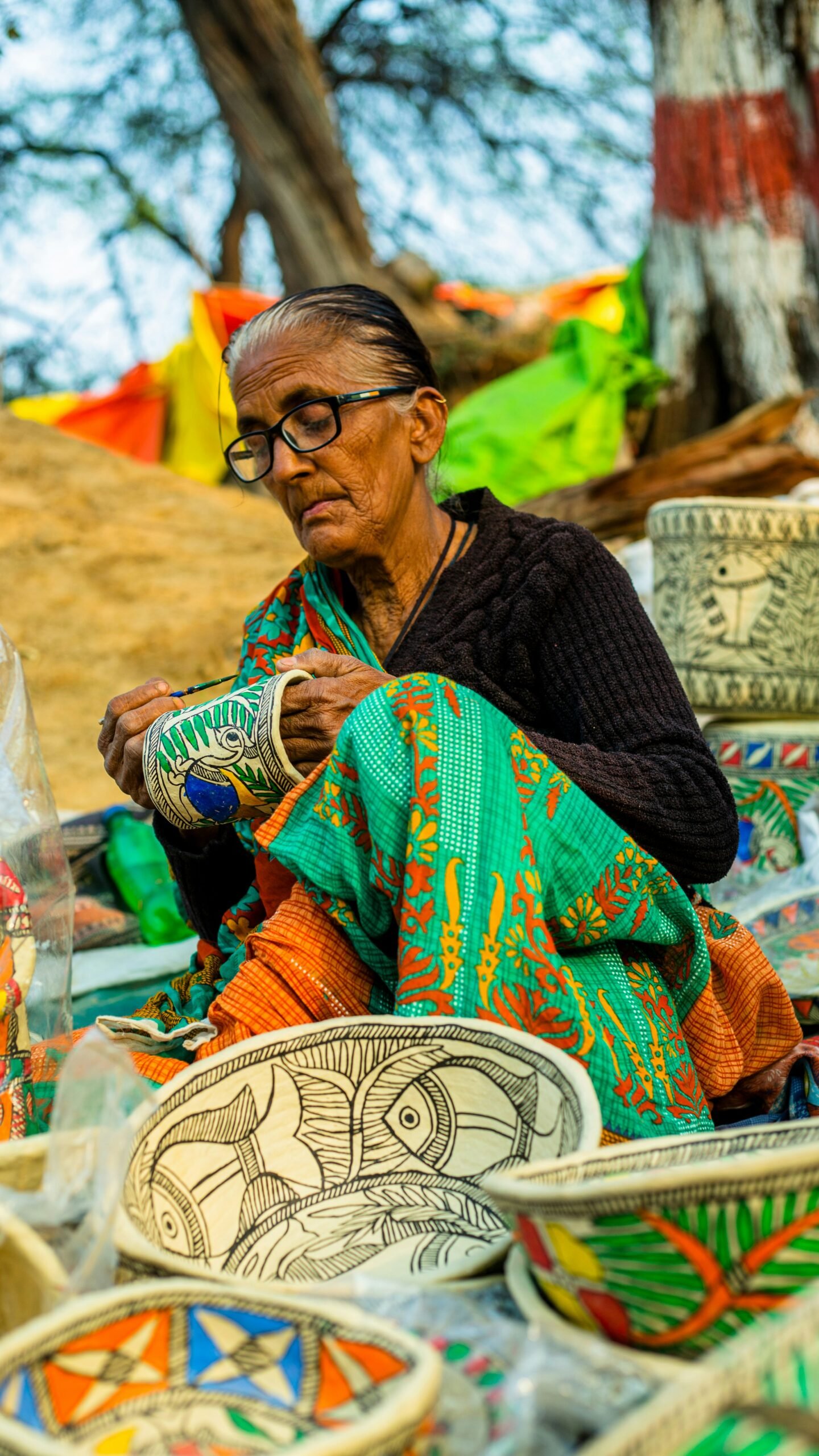Introduction to the Indian Chemical Industry
The Indian chemical industry plays a pivotal role in the nation’s economy and has emerged as one of the fastest-growing sectors.
In recent years, the industry has gained significant traction in the global market, contributing considerably to India’s export revenues.
As the country evolves into a manufacturing powerhouse, the demand for chemical products continues to surge, showcasing the sector’s importance in both domestic and international trade.
Major segments of the Indian chemical industry include petrochemicals, agrochemicals, specialty chemicals, and pharmaceuticals.
The petrochemical sector serves as the backbone, providing essential feedstock for various downstream industries.
This includes the production of plastics, synthetic fibers, and rubber, which are crucial for manufacturing goods ranging from household items to infrastructural components.
Agrochemicals, focusing on crop protection and nutrient management, enhance agricultural productivity, thereby securing food resources and boosting export from India in agricultural goods.
Specialty chemicals, which are formulated for specific applications, have witnessed substantial growth due to their tailored functionalities.
These chemicals, used across industries such as automotive, textiles, and electronics, reflect the innovation and versatility of India’s chemical landscape.
Furthermore, the pharmaceutical industry, a significant player within the chemical sector, positions India as a leading supplier in the global market, particularly for generic medicines.
Statistical insights indicate that the Indian chemical industry is projected to grow at a compound annual growth rate (CAGR) of approximately 9-10% over the next few years.
In terms of export potential, it is poised to contribute around USD 30 billion to India’s overall exports by 2024.
The combination of growth across various segments showcases the robustness of the industry, setting a solid foundation for a more profound understanding of the trends and challenges associated with chemical exports from India.
Current Trends in Chemical Exports
The Indian chemical industry has emerged as a pivotal contributor to the country’s export landscape in 2024.
This growth is largely driven by an increasing demand from global markets, showcasing India’s ability to cater to diverse international needs.
The global push towards sustainability has led to a substantial shift in focus towards green chemicals.
Indian manufacturers are investing in eco-friendly production processes, thereby aligning their output with global environmental standards and regulations.
This transition not only enhances marketability but also strengthens India’s position in the international arena as a responsible exporter.
Technological advancements continue to reshape the export dynamics within this sector.
The integration of cutting-edge technologies such as artificial intelligence and automation has improved production efficiency and quality control.
These innovations facilitate quicker response times to market demands, enabling exporters to adapt swiftly to changing trends. Consequently, Indian chemical exports are becoming more competitive, paving the way for expanded market outreach.
With improving infrastructure supporting logistics and distribution, Indian companies are better equipped to meet international standards, further bolstering their export potential.
In terms of key export destinations, the United States, Europe, and Southeast Asia have emerged as significant markets for Indian chemical products.
In these regions, there is an increasing appetite for specialty chemicals, agrochemicals, and pharmaceuticals originating from India.
Notably, demand for ethanol and other bio-based chemicals has surged, underscoring a broader shift toward sustainability and health-oriented products in the chemical sector.
This presents an opportunity for Indian exporters to diversify their product offerings and enhance their footprint in lucrative markets.
The current export landscape, characterized by these emerging trends, sets a promising foundation for continued growth and innovation in India’s chemical exports.
Government Policies and Initiatives
The Indian government plays a pivotal role in promoting chemical exports through various policies and initiatives aimed at boosting the sector’s growth.
One such initiative is the Production-Linked Incentive (PLI) scheme, which was launched to enhance manufacturing capabilities across several industries, including chemicals.
The PLI scheme provides financial incentives to companies that achieve predetermined production targets, thereby encouraging domestic manufacturers to compete more effectively on a global scale.
This scheme has been designed not only to elevate production levels but also to improve the overall quality of chemical products exported from India.
In addition, the government has been actively pursuing trade agreements with other countries to facilitate smoother export processes.
These agreements are instrumental in reducing tariffs and non-tariff barriers, which can significantly hinder trade in chemical products.
By establishing favorable trade relations, India can enhance its export potential, ensuring that its chemical products find easier access to international markets.
Moreover, these agreements often include provisions for collaboration on technology transfer, which can further bolster the capabilities of Indian chemical manufacturers.
Another critical area of focus for the Indian government is support for research and development (R&D) within the chemical sector.
By funding innovative R&D projects and promoting collaboration between academia and industry, the government enables the development of new, high-quality chemical products.
This emphasis on innovation not only strengthens the position of Indian chemical exports but also ensures that the sector stays competitive in the ever-evolving global market.
Through these concerted efforts, the Indian government is addressing the challenges faced by the chemical industry, ultimately fostering an environment conducive to growth. This holistic approach enhances the potential for successful exports from India, positioning it as a key player in the global chemical market.
Challenges Confronting the Indian Chemical Industry
The Indian chemical industry, a significant contributor to the country’s economy, is currently grappling with multiple challenges that hinder its growth and export potential.
One of the foremost obstacles is the complex regulatory landscape. Compliance with stringent regulations and standards imposed by both domestic and international frameworks can be burdensome for manufacturers.
This regulatory maze not only increases operational costs but also delays product launches in the market, affecting the overall competitiveness of Indian chemical exports.
Another pressing concern is environmental sustainability.
With the global shift towards greener and more sustainable practices, the Indian chemical industry faces increasing pressure to adopt eco-friendly processes and materials.
The challenge lies in balancing environmental responsibilities with economic viability.
Many companies are investing in sustainable practices; however, the initial costs and technological requirements can be significant barriers to widespread adoption, thereby impacting the ability of the sector to compete globally.
Additionally, the Indian chemical industry faces robust competition from other nations, particularly countries with established infrastructures and lower production costs.
Nations like China and the United States are significant players in the global chemical market, often outpacing India in terms of innovation and economies of scale.
This competitive landscape forces Indian manufacturers to innovate continuously and improve efficiencies to maintain their share of the export market.
Supply chain disruptions, exacerbated by geopolitical tensions and global health crises, have also posed significant challenges.
These disruptions hinder the smooth flow of raw materials and finished products, leading to increased lead times and costs.
Understanding these challenges is critical for stakeholders in the Indian chemical industry, as addressing them is essential for enhancing export from India and overall sustainability in the sector.
Sustainability and Environmental Considerations
The Indian chemical export sector is undergoing significant transformations to align with global sustainability trends and to adhere to evolving environmental regulations.
As international markets increasingly demand eco-friendly products, manufacturers in India are transitioning to greener production methods.
This shift is vital not only for compliance with stringent regulations but also for maintaining competitiveness on the global stage. The promotion of sustainable practices in chemical production is becoming a hallmark of India’s export strategy.
One of the most pressing challenges facing the industry is the need to reduce its environmental footprint.
Traditional chemical manufacturing processes often result in considerable waste and pollution. However, with advancements in technology and an increasing emphasis on sustainability, Indian producers are adopting cleaner production techniques.
These methods not only minimize harmful emissions and waste but also improve resource efficiency.
For instance, practices such as process optimization, use of renewable energy sources, and waste recycling have become more prevalent among exporters.
Furthermore, businesses are recognizing the importance of sustainable chemical exports as a driver of economic growth.
The concept of circular economy has gained traction, encouraging companies to rethink their supply chains and product lifecycle.
By implementing sustainable practices, Indian chemical manufacturers are not only enhancing their environmental credentials but are also tapping into new markets that prioritize sustainability.
Initiatives such as responsible sourcing of raw materials and adherence to global sustainability standards are essential steps in this direction.
Overall, while the Indian chemical export sector faces substantial challenges in its quest for sustainability, the proactive measures being taken by industry stakeholders are paving the way for a more environmentally responsible future.
The balance between economic development and environmental preservation remains critical as the industry seeks to thrive in an increasingly eco-conscious global market.
Technological Innovations Driving Growth
The Indian chemical export sector has witnessed a transformative shift in recent years, largely attributable to the integration of advanced technologies.
Automation, digitalization, and artificial intelligence (AI) are among the most significant innovations driving this growth, fundamentally changing processes and enhancing productivity within the industry.
These technological advancements not only streamline operations but also reduce costs, enabling firms to offer competitive pricing in the global market.
Automation has revolutionized various manufacturing processes, allowing for increased efficiency and accuracy.
By minimizing manual intervention, Indian chemical exporters can ensure consistency in product quality while significantly reducing the risk of human error.
This is particularly crucial in the chemical sector, where precision is paramount.
Moreover, the adoption of robotics and automated systems has facilitated faster production cycles, which is essential for meeting the demands of international clients.
Digitalization plays a vital role in improving supply chain management for chemical exports from India.
With sophisticated data analytics and cloud-based solutions, businesses can better forecast demand, monitor inventory levels, and optimize logistics.
This level of insight enables Indian firms to respond more agilely to market fluctuations and customer requirements, thereby solidifying their presence in competitive international markets.
Artificial intelligence, particularly in predictive analytics, is empowering exporters to make informed decisions based on market trends and consumer behavior analysis.
By leveraging AI-driven tools, companies can identify lucrative opportunities and mitigate risks, positioning themselves advantageously in evolving markets.
Furthermore, AI aids in enhancing customer service through chatbots and personalized communication, thereby fostering stronger client relationships.
As the landscape of international trade evolves, technology will continue to be a pivotal element in strengthening India’s chemical export capabilities.
Firms that embrace these innovations stand to gain a substantial competitive edge, ensuring sustained growth in an increasingly challenging market environment.
Market Opportunities and Future Prospects
The landscape for Indian chemical exports is poised for transformation as the global market adapts to new demands and economic shifts.
In the coming years, several emerging markets present opportunities for India’s chemical export sector.
Regions such as Southeast Asia, Africa, and Latin America are witnessing an increasing demand for a variety of chemical products, including fertilizers, plastics, and specialty chemicals.
India, with its diverse chemical manufacturing base and strategic geographical location, is well-positioned to capitalize on this growth.
Additionally, sectors within the chemical industry are slated for notable growth.
For instance, the pharmaceutical sector remains robust, with a steady increase in the export of Active Pharmaceutical Ingredients (APIs) and generic drugs driven by rising global healthcare needs.
Similarly, the agrochemical segment is expected to thrive due to the rising demand for crop protection and nutrition products, both domestically and internationally.
Sustainable and green chemistry is also gaining momentum, presenting opportunities for Indian companies to innovate and export environmentally friendly chemical solutions.
Strategic partnerships will play a critical role in bolstering the export from India.
Collaborations between Indian chemical manufacturers and international firms can lead to technology transfers, enhanced production capabilities, and access to new markets.
Moreover, leveraging innovation through research and development initiatives will allow Indian exporters to meet international standards and cater to niche markets, thus enhancing competitiveness on the global stage.
As governments worldwide emphasize sustainability, there will also be a significant shift towards bio-based chemicals.
Indian companies that adapt to these trends and invest in eco-friendly practices will likely find a receptive audience in international markets.
Overall, the future of chemical exports from India appears promising, contingent on capitalizing on these emerging trends and seizing available opportunities.
Case Studies of Successful Exporters
India’s chemical export industry, a vital component of the nation’s economy, has seen significant advancements in recent years.
Several companies have exemplified success in navigating this complex landscape through innovative strategies and committed practices.
One such company is Aarti Industries, a leading player in the specialty chemicals sector. By investing heavily in research and development, Aarti Industries has managed to stay ahead of global competitors.
Their focus on developing sustainable products has allowed them to penetrate international markets while adhering to environmental regulations, making them a model for other firms aiming to export from India.
Another success story is represented by Sudarshan Chemical Industries, a manufacturer of pigments and dyes.
The company’s strategic partnerships with international suppliers and local governments have enhanced their market reach significantly.
By leveraging these collaborations, Sudarshan has optimized its supply chain, reducing costs and improving efficiency.
Their commitment to quality has also earned them ISO certification, which has bolstered their credibility in foreign markets.
Such certifications are critical for exporting, as they assure potential buyers of product consistency and compliance with international standards.
A third noteworthy example is Alkyl Amines Chemicals Ltd., an entity that has specialized in producing amines.
By investing in automation and cutting-edge manufacturing technologies, Alkyl Amines has increased its production capacity while minimizing waste.
This innovative approach not only improves profit margins but also allows them to meet the growing demand for their products in global markets.
Furthermore, their engagement in proactive market research has equipped them to identify trends and shifts in customer preferences, ensuring their product line remains relevant.
The experiences and strategies employed by these companies highlight the various paths to successful export from India, offering valuable insights for other businesses in the chemical sector.
Conclusion and Recommendations
In recent years, the landscape of chemical exports from India has exhibited notable growth and transformation, which has been both a reflection of global market dynamics and the robust capabilities of the Indian chemical industry.
Despite facing myriad challenges such as regulatory hurdles, fluctuating raw material prices, and fierce competition, the potential for growth remains substantial.
The ongoing government initiatives to enhance export policies will play a critical role in enabling stakeholders to navigate these challenges effectively.
To sustain and promote the growth of chemical exports from India, a multi-faceted approach is essential.
First and foremost, stakeholders in the industry need to strengthen collaboration among various players, including manufacturers, government agencies, and research institutions.
Such a collaborative ecosystem can facilitate knowledge sharing, technology transfer, and innovation, ultimately leading to improved production processes and quality standards.
Additionally, leveraging government initiatives aimed at boosting exports is crucial. Stakeholders should actively engage with policies such as the Production-Linked Incentive (PLI) scheme and various export incentive programs.
These initiatives not only provide financial support but also create an environment conducive to enhanced competitiveness in the global market.
Moreover, it is imperative to capitalize on emerging market opportunities by diversifying product portfolios and identifying niche markets that align with global demand trends.
The growing emphasis on sustainability presents an opportunity for Indian chemical exporters to innovate and develop eco-friendly products, thereby meeting the increasing global demand for sustainable solutions.
In summary, the future of chemical exports from India hinges on addressing the existing challenges through collaboration, innovation, and strategic alignment with government initiatives.
By doing so, stakeholders can not only enhance their competitive advantage but also contribute to the overall growth and sustainability of the industry in the years to come.






